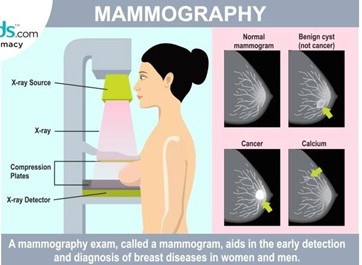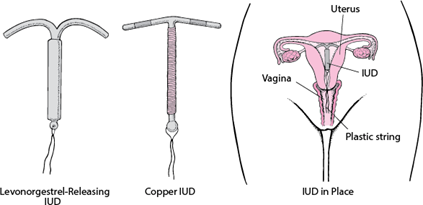The nurse is leading an education activity about annual mammograms. At what age should the nurse recommend annual screening?
20 years old
30 years old
45 years old
55 years old
The Correct Answer is C
The current recommendation from the American Cancer Society is that women with an average risk of breast cancer should undergo annual mammography screening starting at age 45, although women may choose to start screening as early as age 40. Therefore, the nurse should recommend annual mammography screening starting at age 45. However, it is important to note that women with certain risk factors for breast cancer, such as a family history of the disease, may need to begin screening earlier or undergo additional screening tests. The nurse can provide more individualized recommendations based on each woman's specific risk factors.

Nursing Test Bank
Naxlex Comprehensive Predictor Exams
Related Questions
Correct Answer is A
Explanation
IUDs are highly effective, with a failure rate of less than 1% per year, and they do not require daily atention or use. The intervaginal contraceptive ring and the transdermal contraceptive patch are also effective methods of contraception, with a failure rate of less than 1% per year when used correctly, but they require consistent use and proper application. The male condom is a highly effective method of contraception when used consistently and correctly, with a failure rate of about 2% per year. However, it is not as effective as the IUD, and its efficacy can be affected by improper use or condom breakage.

Correct Answer is D
Explanation
Choice A: Tremors, rigidity, bradykinesia/akinesia, postural instability are correct because they are the cardinal motor symptoms of Parkinson's disease. They are caused by the degeneration of dopamine-producing neurons in the brain that control movement. Tremors are involuntary shaking of the limbs or other body parts. Rigidity is stiffness or resistance to movement. Bradykinesia/akinesia is slowness or absence of movement. Postural instability is impaired balance or coordination.
Choice B: Dysphagia is correct because it is a common non-motor symptom of Parkinson's disease. It is difficulty swallowing food or liquids. It can result from the impairment of the muscles involved in swallowing or from the reduced production of saliva. Dysphagia can cause malnutrition, dehydration, aspiration, or choking.
Choice C: Psychiatric changes: depression, anxiety, dementia, delirium, hallucinations are correct because they are also common non-motor symptoms of Parkinson's disease. They can result from the changes in the brain chemistry or structure, the side effects of medications, or the emotional impact of living with a chronic condition. Depression is a persistent feeling of sadness, hopelessness, or loss of interest. Anxiety is a feeling of nervousness, worry, or fear.
Dementia is a decline in cognitive functions such as memory, atention, or reasoning. Delirium is a sudden state of confusion, disorientation, or agitation. Hallucinations are false perceptions of things that are not there.
Choice D: All of the above are correct because they are possible signs of Parkinson's disease. However, not all patients experience all of these symptoms or to the same degree. The symptoms may vary depending on the stage and progression of the disease, the individual characteristics of the patient, and the treatment options available.
Whether you are a student looking to ace your exams or a practicing nurse seeking to enhance your expertise , our nursing education contents will empower you with the confidence and competence to make a difference in the lives of patients and become a respected leader in the healthcare field.
Visit Naxlex, invest in your future and unlock endless possibilities with our unparalleled nursing education contents today
Report Wrong Answer on the Current Question
Do you disagree with the answer? If yes, what is your expected answer? Explain.
Kindly be descriptive with the issue you are facing.
